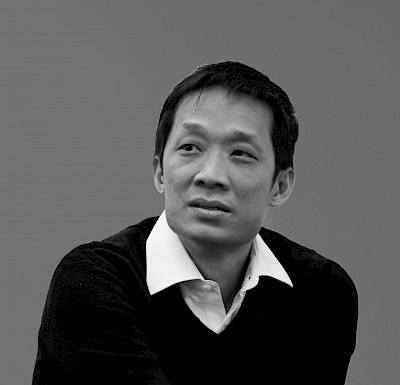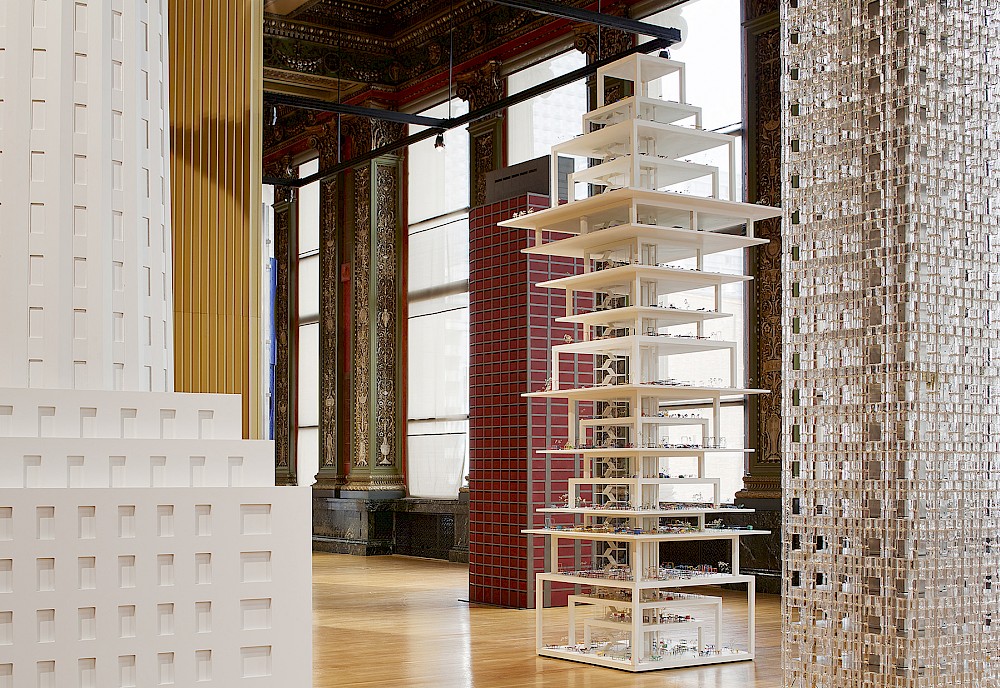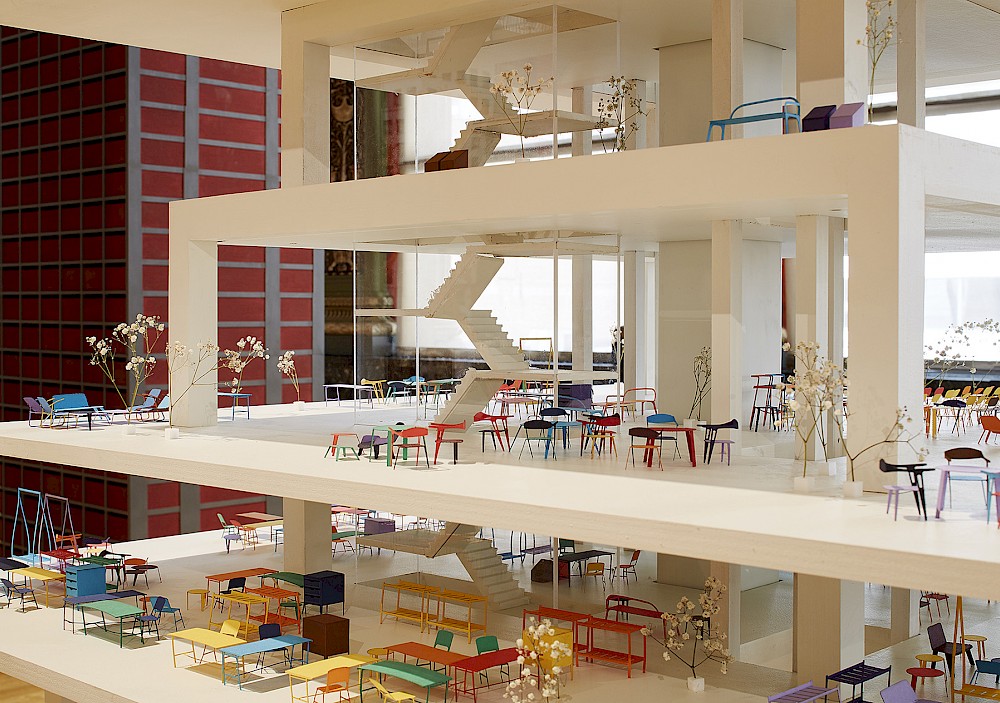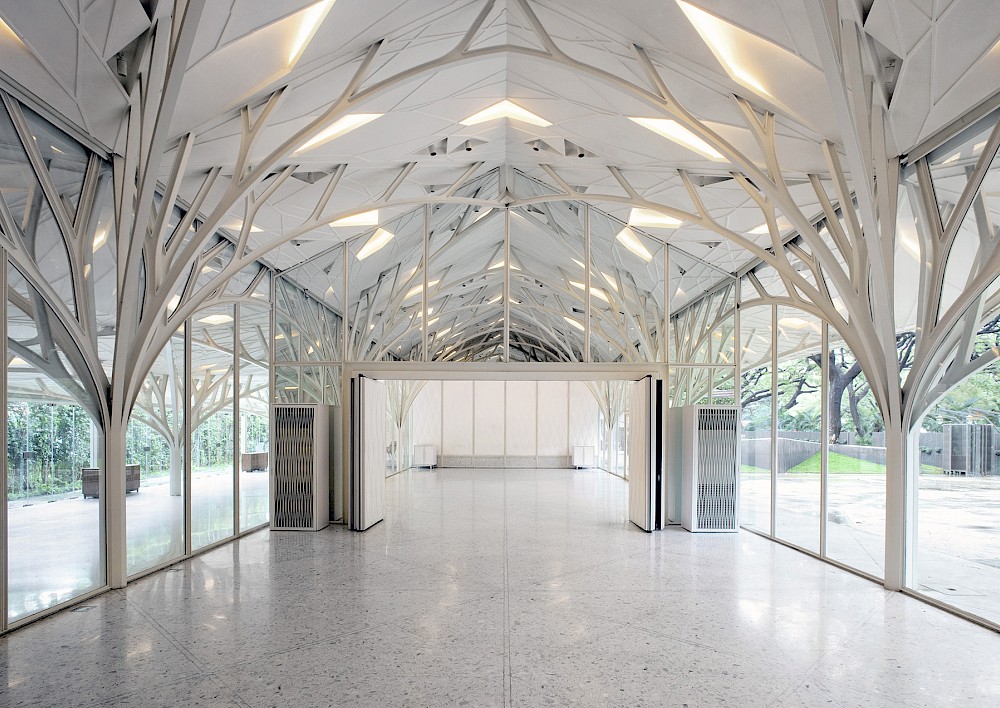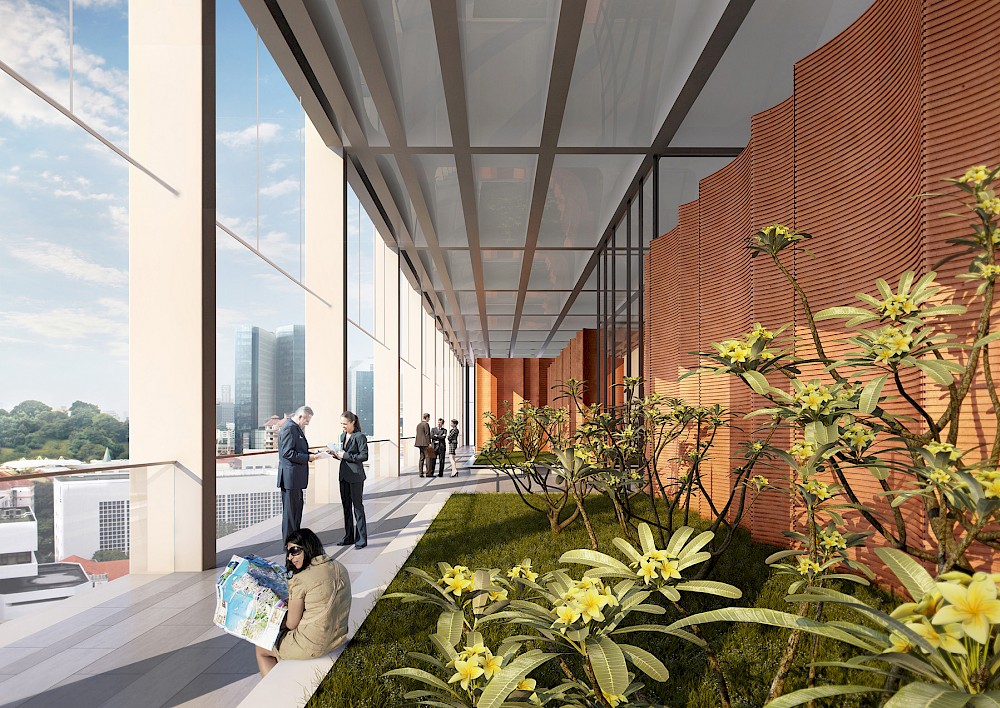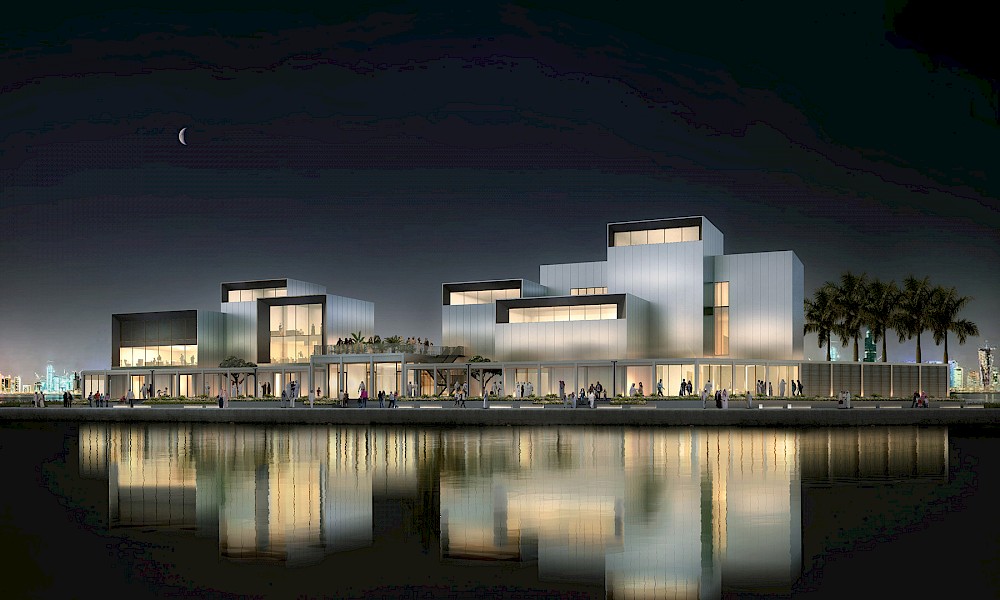BIENNIAL PROJECT
Other Histories
To make new history, we must look at other histories. If the primary source of derivation for modern architecture is classicism, what would an architecture that is derived from a non-Western historical tradition be? This proposal for the new Chicago Tribune Far East Asian Headquarters explores a possible answer. Its design is grounded in principals of ancient Chinese architecture in the aim of locating a contemporary architectural vocabulary in an Eastern formal and philosophical basis. The source of a Chinese architectural language can be found in the architecture of all its imperial cities, where the irreducible part is the pavilion. When stacked vertically, pavilions form a pagoda: a structure without the hierarchal and tripartite relationships of Western classicism, that instead embody more pliable organizational possibilities. The building is a tower of pavilions: an accumulation of parts, each subtly differentiated. It is a vertical city where meaning is embodied in the relation between elements. Within the conventional logic of the high-rise, this structure rejects the extruded floor plate to create a tower of volumes, each with its own autonomy and status in the vertical axis. The spaces of this new vertical city are attuned to the nature of the knowledge economy and the contemporary media environment where performance dominates, flexibility sets value, and well-being is the ultimate cause. Pavilions frame theaters, meeting zones, restful landscapes, and hedonistic gardens: the true productive spaces for today’s media workers. This is architecture with a language not rooted in Western thought and with a history outside of the narratives of modernism. It is a tower for a media with global reach and capital based offshore. It makes new histories for a polyglot and multi-centered architectural culture.
BIO
Christopher Lee is the co-founder and principal of Serie Architects and Associate Professor in Practice at Harvard University’s Graduate School of Design. His research, writings, and teaching on the embedded intelligence and cultural values of building types underpin the work of Serie. With offices in London, Mumbai, Singapore, and Beijing, the practice has gained a reputation for designing distinctive buildings in the public realm. The work of Serie is known for its organizational intelligence, elegance, and contextual engagement and has been recognized through many prestigious awards, including the BD Young Architect of the Year Award, Architectural Record Design Vanguard, World Architecture Festival Award, and the Leading European Architects Review. Serie is currently working on a string of high-profile, civic and cultural buildings including the new Singapore State Courts Complex; the new School of Design & Environment; the National University of Singapore; the International Institute of Human Settlement, India; and the Jameel Art Centre.



